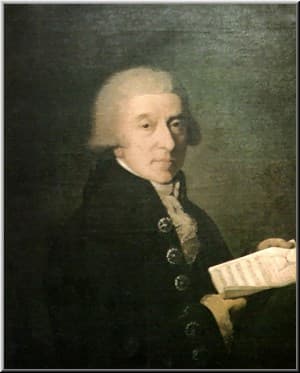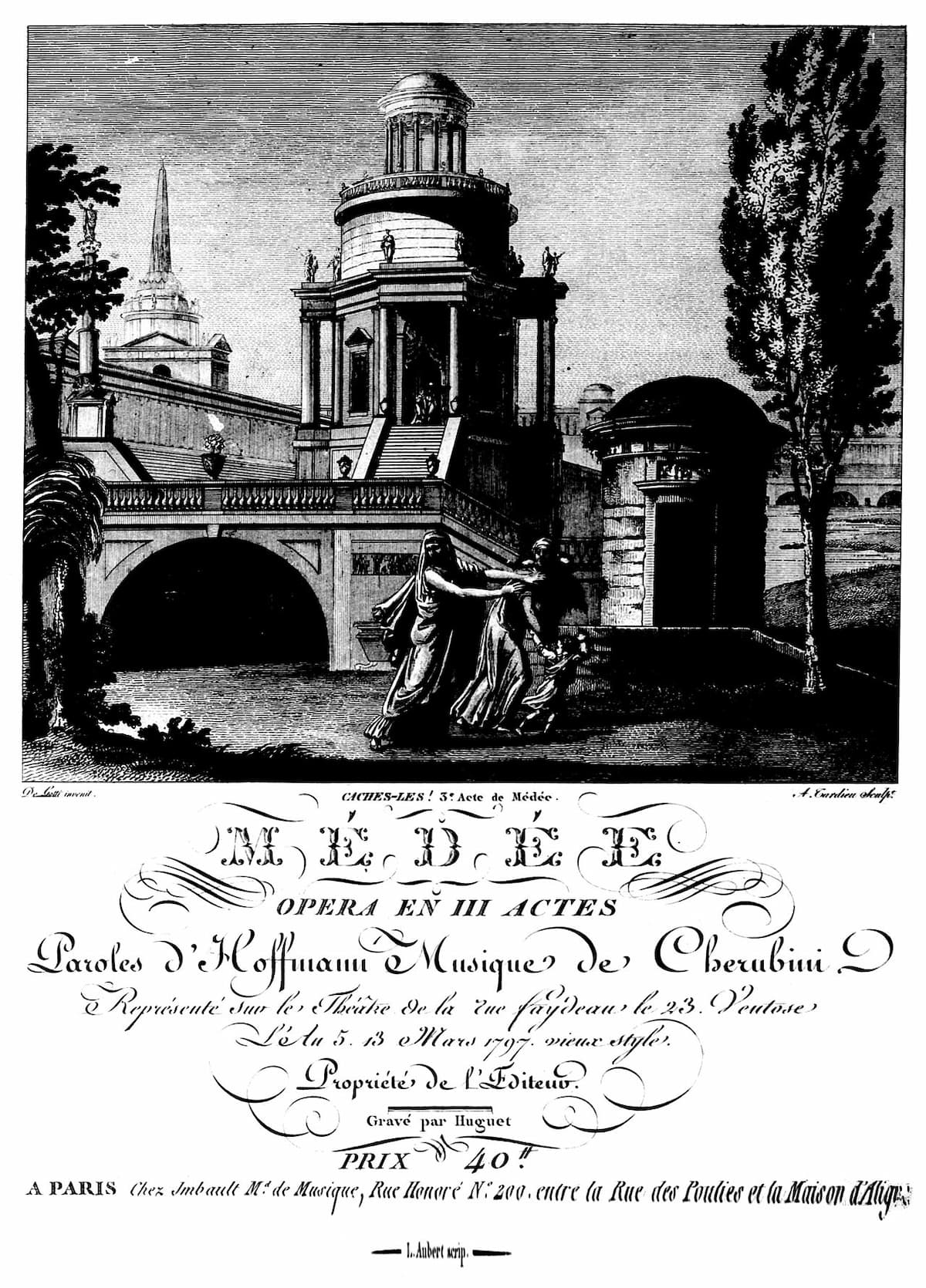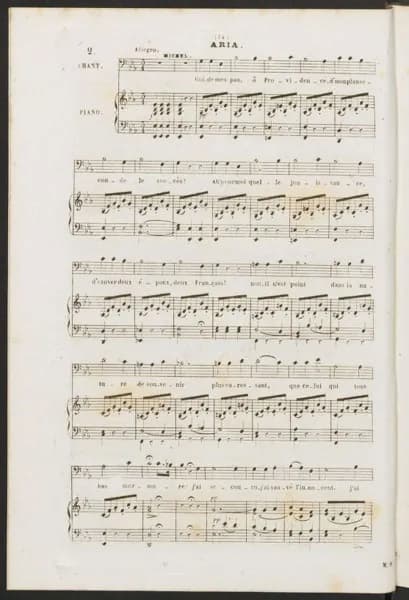One thing is for sure, Maria Luigi Carlo Zenobio Salvatore Cherubini was born in Florence in 1760. There still seems to be a bit of discussion on the exact day of his birth, however. Some of that confusion comes from Cherubini himself, as he gave both 8 and 14 September as his dates of birth in the biographical preface to the catalogue of his works compiled in 1831. However, the baptismal records of S Giovanni seem relatively clear, stating that Cherubini was born on 14 September and baptized the following day.
Luigi Cherubini: String Quartet No. 1 in E-flat Major (Cherubini Quartet)
First Compositions

Portrait of Luigi Cherubini
The tenth of twelve children, Luigi displayed precocious musical talents, and he received his first music lessons from his father, Bartolomeo Cherubini. Cherubini senior was maestro al cembalo at the Teatro della Pergola in Florence. In a charming biography, we read, “Bartolomeo took Luigi in hand, and this with such good results, that at the age of ten years, the little fellow could accompany figured basses, play easy pieces upon the harpsichord, and make a tolerable noise upon the violin.”
Young Cherubini continued his musical schooling with Bartolomeo Felici, and subsequently with Pietro Bizzarri and Giuseppe Castrucci. His first composition, a Mass in D for four voices and instruments was publicly performed in Florence. In short order he followed up with additional mass settings, the cantata La pubblica felicità, performed at Florence Cathedral in 1774 in honour of Duke Leopold of Tuscany (later Emperor Leopold II), and an intermezzo, Il giocatore (1775).
Luigi Cherubini: Harpsichord Sonata No. 3 in B-flat Major (Paule van Parys, harpsichord)
Apprenticeship with Giuseppe Sarti

Giuseppe Sarti
Duke Leopold was rather taken with the boy’s talents, and he decided to provide a scholarship for young Luigi to study in Bologna and Milan between 1778 and 1781. Cherubini became apprenticed to Giuseppe Sarti, maestro di cappella at the cathedral of Milan. Sarti was a highly accomplished opera composer who also wrote a vast amount of sacred music for the cathedral, and subsequently became acquainted with Mozart and Salieri.
Sarti provided Cherubini with lessons in counterpoint and introduced him to a variety of musical styles used in dramatic music. Sarti was commissioned to write a number of operas for Florentine theatres, and as Cherubini himself noted, “I had to prepare all the arias of the secondary roles in operas which he was composing.” This proved a highly valuable practical experience for Cherubini, who “compensated Sarti for his instruction by helping the master complete his commissions.”
Luigi Cherubini: Medea, “Giason! Dei Tuoi Figli La Madre”
Recitative Guidelines

Luigi Cherubini: Medea
Sarti apparently provided Cherubini with a summary of principles for dramatic composition, which the young composer dutifully copied. This exceptional document describes that “the cantilena of the recitative must not be either too low or too high, but it must imitate the inflection of speech, except where the sentiment of the discourse requires a more meaningful expression in the melody.”
Cherubini continues, “the endings or finals of sections are to be varied within the cantilena, and the period-mark, comma, colon, and semi-colon, the melody is to proceed downward. For the question mark and exclamation point, the same melody is to be led upward and remain high. At the end of a decasyllabic line, if it is terminated by a period mark, one will make the ending an authentic cadence; if it ends with a question mark or an exclamation point, one will make the ending a plagal cadence.”
Luigi Cherubini: Horn Sonata in F Major (Barry Tuckwell, horn; Academy of St. Martin in the Fields Orchestra; Neville Marriner, cond.)
Onwards to France

Luigi Cherubini: Les deux journées
For scholars, the content of this unique document represented a long-established musical practice, but what is unusual is “that the young Italian was concerned enough with the recitative as a dramatic vehicle to write down the outline.” Apparently, it also shows that Cherubini had already been exposed to some influence from the so-called reform tendencies in opera.
To be sure, Cherubini was aware of the problems involved in wedding text to music, and he “started from the very outset of his career with an imaginative vision of dramatic possibilities.” With the completion of his Italian engagements in 1788 and the establishment of his permanent residence in France, Cherubini set to work on famously giving expression to his true musical gifts.
For more of the best in classical music, sign up for our E-Newsletter
